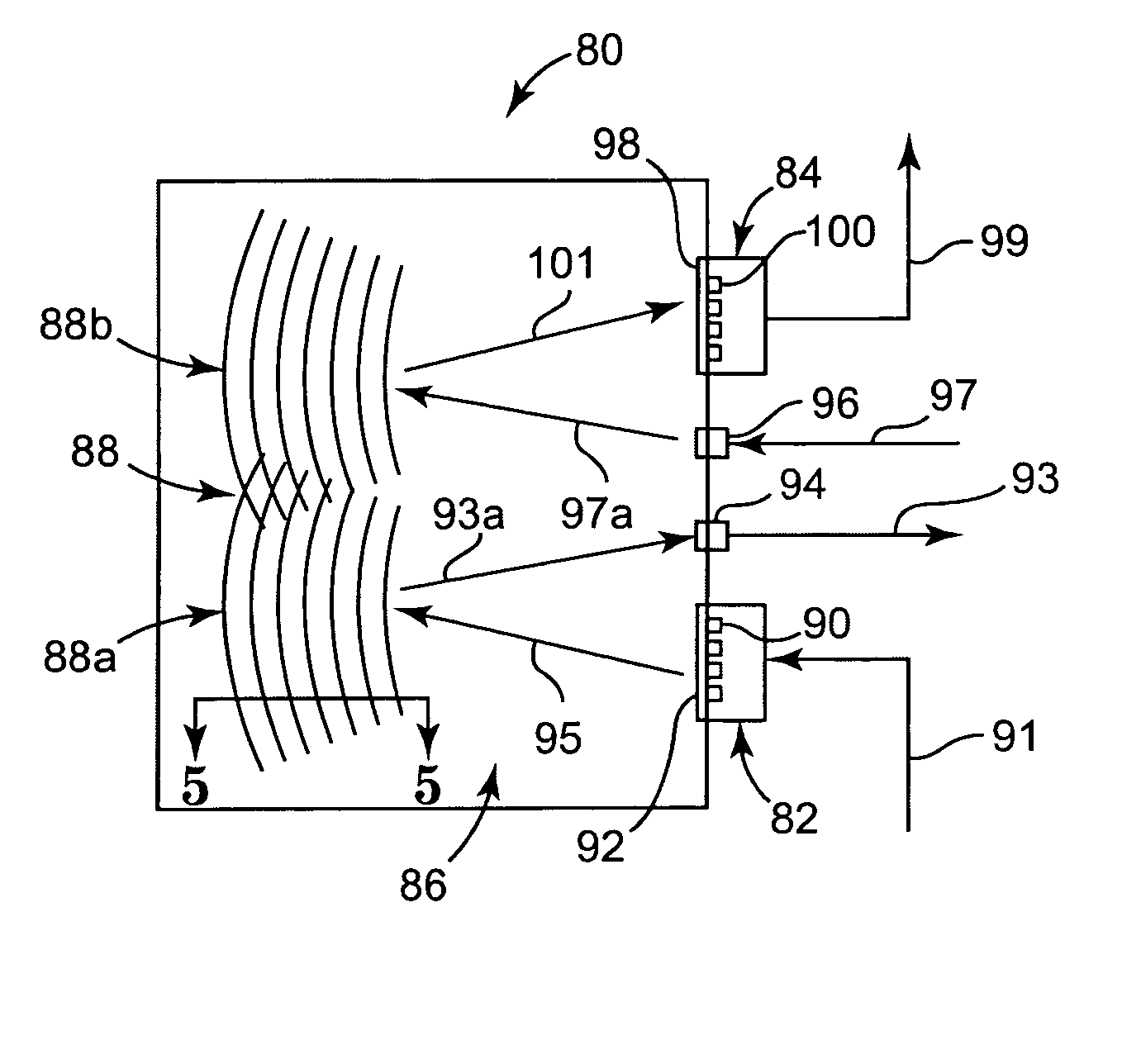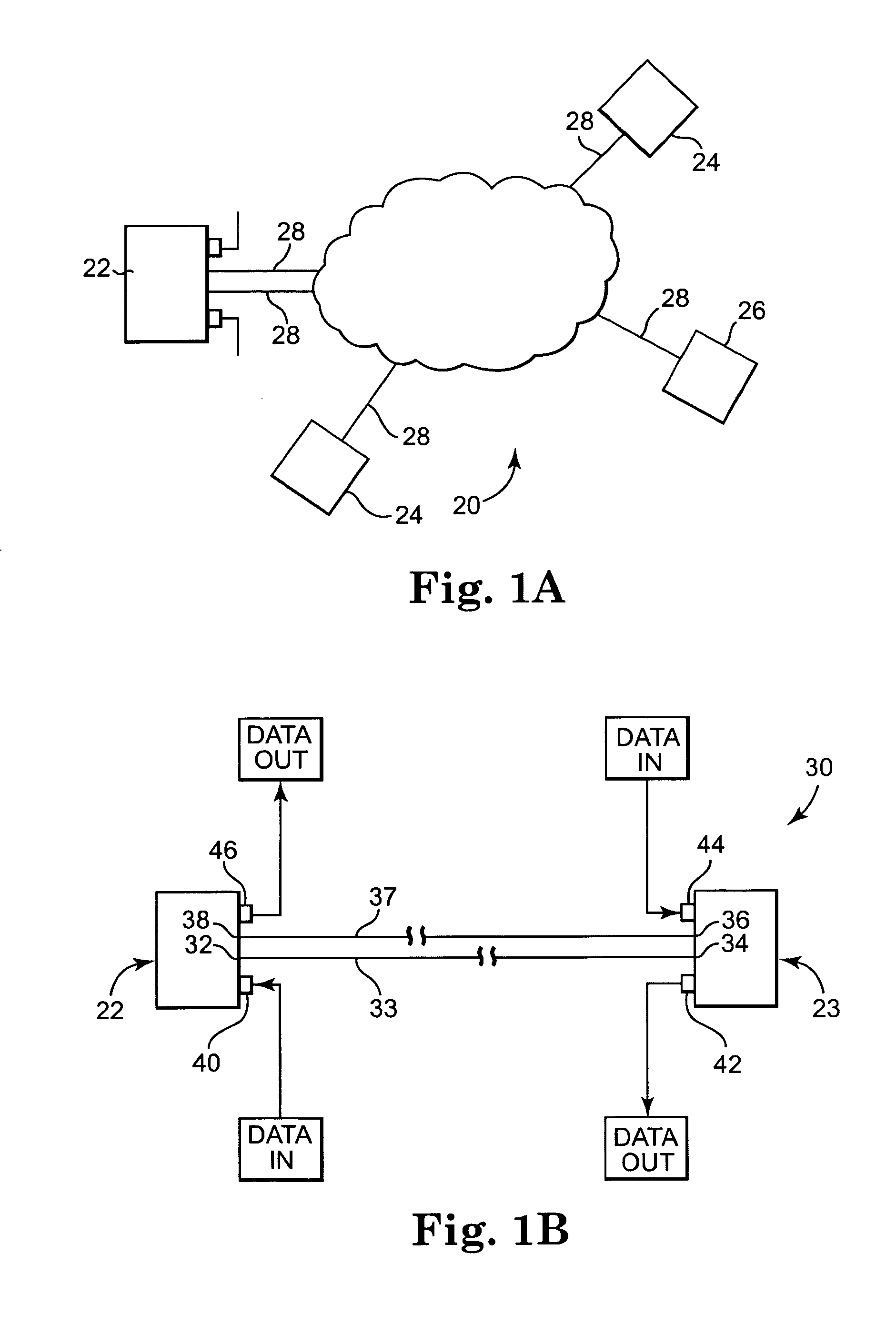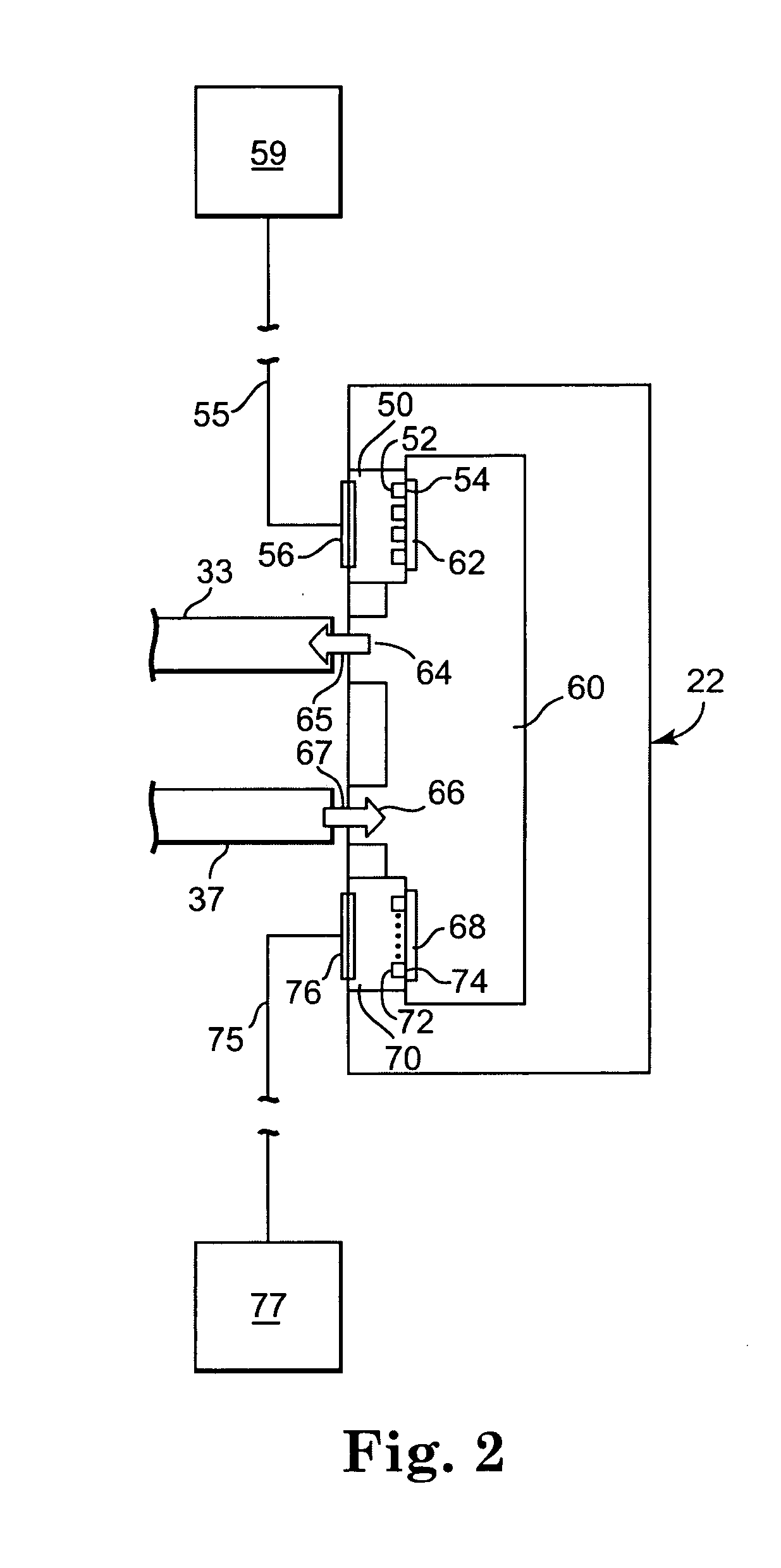Integrated volume holographic optical circuit apparatus
a holographic optical circuit and integrated volume technology, applied in the field of optical (or fiber optical) systems, can solve the problems of difficult manufacturing, insertion loss of several decibels, and large increase in the size of the component package, so as to optimize optical performance and reliability, and reduce the number of optical fiber connections
- Summary
- Abstract
- Description
- Claims
- Application Information
AI Technical Summary
Benefits of technology
Problems solved by technology
Method used
Image
Examples
Embodiment Construction
[0020] This disclosure relates to optical circuit components for use with optical systems. The disclosure, including the figures, describes the circuit components and their parts with reference to several illustrative examples. For example, the present disclosure proceeds with respect to the particular transceiver described below. However, it should be noted that the present invention could be implemented in other circuit components, such as receivers or transmitters, as well. The present disclosure proceeds with respect to the transceiver for illustrative purposes only. Other examples are contemplated and are mentioned below or are otherwise imaginable to someone skilled in the art, including other circuit components as well. The scope of the invention is not limited to the few examples, i.e., the described embodiments of the invention. Rather, the scope of the invention is defined by reference to the appended claims. Changes can be made to the examples, including alternative desig...
PUM
 Login to View More
Login to View More Abstract
Description
Claims
Application Information
 Login to View More
Login to View More - Generate Ideas
- Intellectual Property
- Life Sciences
- Materials
- Tech Scout
- Unparalleled Data Quality
- Higher Quality Content
- 60% Fewer Hallucinations
Browse by: Latest US Patents, China's latest patents, Technical Efficacy Thesaurus, Application Domain, Technology Topic, Popular Technical Reports.
© 2025 PatSnap. All rights reserved.Legal|Privacy policy|Modern Slavery Act Transparency Statement|Sitemap|About US| Contact US: help@patsnap.com



